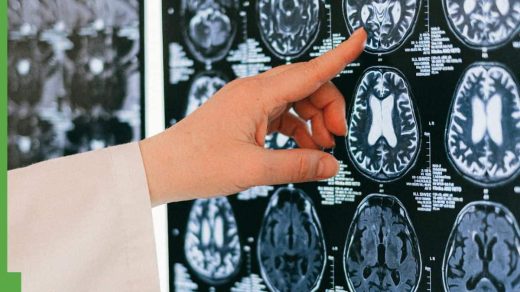
While recovering from a recent surgery, Ryan Oevermann, a Sun Peaks local and Taekwon-Do instructor, expressed optimism for his future with Parkinson’s Disease.
On Feb. 27, Oevermann had the opportunity to undergo deep brain stimulation (DBS) therapy, a surgery that could improve his muscular responses using electric stimuli.
Pinned to the top of his facebook page, Oevermann’s post from July 20, 2021 defined Parkinson’s Disease as “a progressively debilitating neurological impairment by which the brain doesn’t produce enough dopamine, a neurotransmitter that essentially affects communication between the brain and the muscles.”
There are some symptoms he doesn’t have that others with the disease may, and that wouldn’t be addressed by the insertion of the DBS device.
“This device works only for motor movements,” he said. “So if you have problems with muscles, whatever it may be, this device will help.”
His symptoms were progressively getting worse before he was able to get the procedure done.
“I couldn’t write, I couldn’t speak, I couldn’t walk, I couldn’t type,” he said.
After his device was activated, Oevermann said he experienced a profound and noticeable improvement.
“I literally felt like I was back from the dead.”
Undergoing surgery
The initial surgery is something Oevermann described as “a surreal experience.”
“You’re awake for the first half,” he said. “This is the scary part.”
During this part of the procedure, they numb your skull and put a cage on. He described the sawing into his head as the sound you hear at the dentist.
“It’s not painful, but it’s creepy,” he explained.
Then they insert probes that penetrate the part of the brain responsible for motor movements.
Oevermann pointed out the “power chord” running down into the neurostimulator device that was implanted in his chest while unconscious. Though not turned on when first surgically inserted, this is the device that produces the electrical pulses to stimulate the brain.
Improvement in symptoms caused by Parkinson’s Disease
“Before I went into surgery, I was Parkinsonian,” Oevermann said. He pulled out a chart which sectioned his days into on and off based on his severity of symptoms.
“Green is good,” he said. “Grey is bad, grey is ‘off’.”
Without medication or when the medication is not working, he described himself as off. On these days, he experienced shuffle stepping, loss of balance and control of his muscles and slurring his speech or not speaking correctly.
When the chart read green, he said he could talk and walk normally, which meant the medication he takes was working.
Since the device was activated, his charts have gone from mostly grey to green.
The surgery, according to him, had about a two to three per cent risk of something going wrong, but any risk is a consideration when it’s your head being drilled into.
“I had no other way to go, the medication wasn’t working,” he said. “So I had to, it was a Hail Mary.”
The goal with this surgery for Oevermann is to transition off his medication. He’s still taking it currently, but at a much lower dose.
He’ll continue going back to Vancouver each week for the next few weeks.
“Then it’ll probably plateau at some point either off medication completely or with some minimal amounts,” he said. “Every six months I’ll go back and get checked up again.”
He’s back at work as a head waiter at the restaurant at the Sun Peaks Grand Hotel and Conference Centre and is teaching Taekwon-Do again as well. He said he’s been awake, sharp and speaking clearly, and his coworkers have noticed.
“I have a lot of hope,” he said. “I don’t think I’m done with Parkinson’s, but I haven’t been symptomatic because of the device.”



